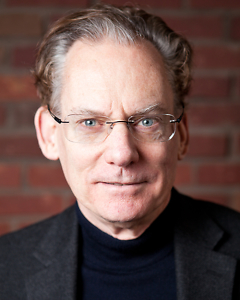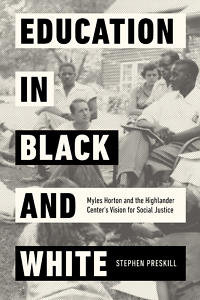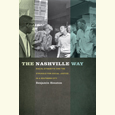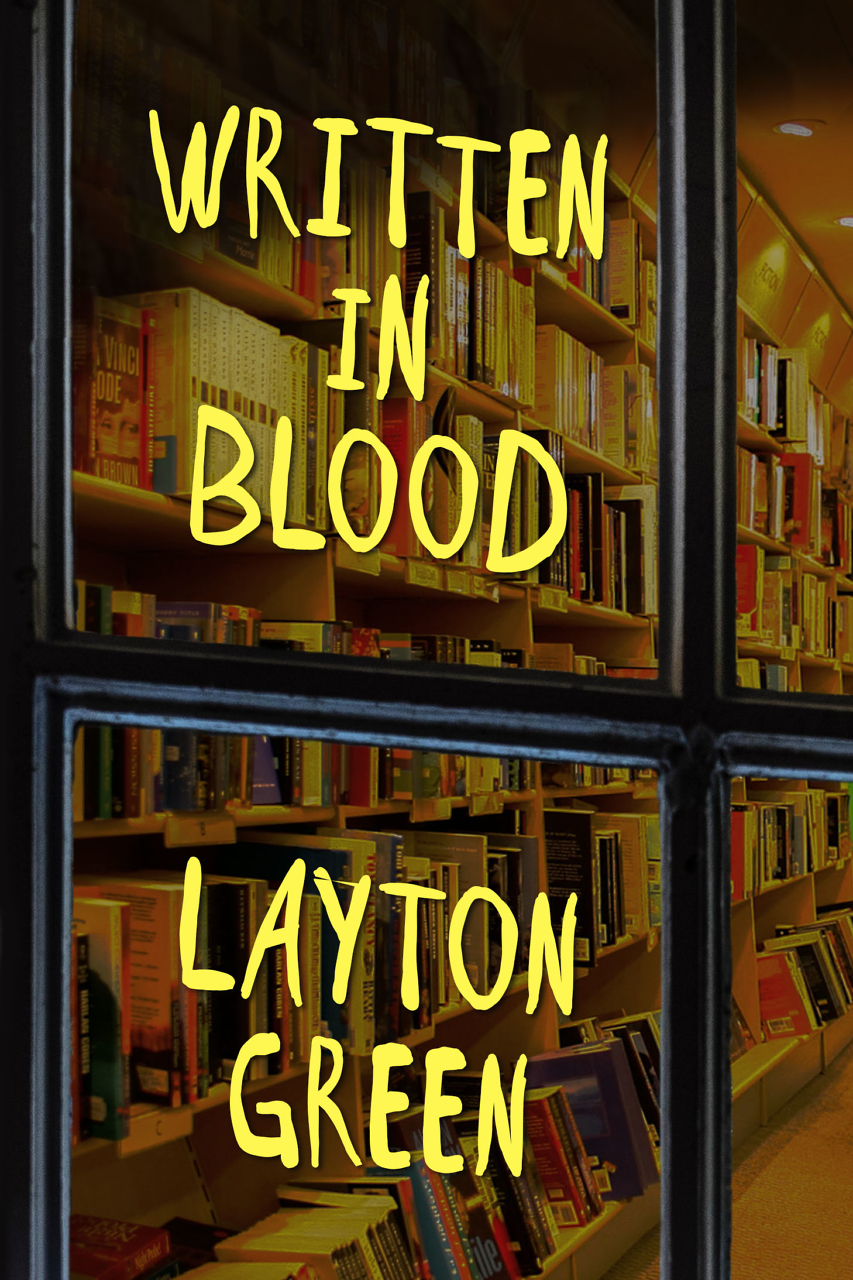Empowering People for the Long Haul
Stephen Preskill revisits the story of Myles Horton and the Highlander Folk School
With Education in Black and White, Stephen Preskill revisits and revives the story of Myles Horton and Tennessee’s Highlander Center. Historians of the civil rights and labor movements have long known about the significance of Highlander, but this lucidly written book means to frame Myles Horton’s story “as an account of an educator, passionately committed to helping adults, mostly poor and forgotten, to wake up to their own historic agency.”
 Highlander’s vision of education required people coming together, comparing experiences, and making decisions for themselves. Horton and the many others with whom he worked at Highlander facilitated deep, searching exchanges more than they taught people in a formal sense. Horton worried less about reaching ultimate answers to social questions than with giving people the space and the means to find those answers on their own.
Highlander’s vision of education required people coming together, comparing experiences, and making decisions for themselves. Horton and the many others with whom he worked at Highlander facilitated deep, searching exchanges more than they taught people in a formal sense. Horton worried less about reaching ultimate answers to social questions than with giving people the space and the means to find those answers on their own.
The Highlander Folk School, now known as the Highlander Research and Education Center, was founded in Monteagle in 1932 and is most widely known as a place where iconic civil rights activists, particularly Rosa Parks and Martin Luther King Jr., participated in training sessions. But, as Education in Black and White shows, its influence ranged beyond those two now world-historical figures. Highlander lives at the intersection of many other veins of activism in the United States, beginning with labor organizing in the 1930s and moving on to civil rights organizing, to work with local people in Appalachia, and into connections with similar kinds of democratic education initiatives in Latin America in the 1970s and 80s.
Education in Black and White begins with a haunting prologue describing the 2019 fire that destroyed the Highlander Center’s main administrative building at its current home in New Market. A “crude white nationalist symbol” was found on the parking lot pavement in the aftermath. Preskill’s choice to open the story in this way has a foreboding poetry about it. In an age of renewed white nationalism, it brings into bolder relief how rare an intentionally integrated space like Highlander was in the Jim Crow South. Preskill shows how this practice developed organically from the center’s labor movement roots, eventually reaching into the civil rights movement, so that the center became “a microcosm of an integrated, democratic society.” Completing the circle, we also learn how this interracial, democratic practice made Horton and Highlander a target, subject to intimidation and baseless legal action, harried and hunted by those who opposed the world they sought to create.
 The underlying principle of Highlander — that democratic education requires give and take between equals — is so disarmingly simple and feels so right in our bones that it could easily collapse into platitudes about inevitabilities. But giving people the tools to free themselves is often much tougher than advertised. Education in Black and White succeeds when the author considers concrete examples, allowing the reader to better imagine the difficult work. The best sections sometimes involve people other than Myles Horton, especially his wife Zilphia Horton’s uses of music and theatre, where people sang in unison and acted out conflicts teeming with everyday dramatic significance. The moving story of Septima Clark showing adults in Johns Island, South Carolina, how to sign their own names, transforming them while preserving their dignity, comes to mind, as does John Gaventa’s groundbreaking work in community-based, participatory research in Appalachia.
The underlying principle of Highlander — that democratic education requires give and take between equals — is so disarmingly simple and feels so right in our bones that it could easily collapse into platitudes about inevitabilities. But giving people the tools to free themselves is often much tougher than advertised. Education in Black and White succeeds when the author considers concrete examples, allowing the reader to better imagine the difficult work. The best sections sometimes involve people other than Myles Horton, especially his wife Zilphia Horton’s uses of music and theatre, where people sang in unison and acted out conflicts teeming with everyday dramatic significance. The moving story of Septima Clark showing adults in Johns Island, South Carolina, how to sign their own names, transforming them while preserving their dignity, comes to mind, as does John Gaventa’s groundbreaking work in community-based, participatory research in Appalachia.
A book like Education in Black and White, with such sympathy for its subject, makes for a peculiar bind. Myles Horton — a Savannah, Tennessee, native who became involved in labor and community activism as a young man — was an epic storyteller who loved to talk and laugh. He was also self-aware, suspicious about his own charisma and tendencies to dictate, to talk rather than listen. Preskill shows when and where Horton fell short. A similar tension works through the book. Preskill tells stories of people too often overlooked, figures like Septima Clark, Bernice Robinson, or Ella Baker, emphasizing democratic decision-making. Yet at times there is heavy reliance on autobiography or correspondence from the book’s central figure, rather than a broader field of reading. Some sections are tightly focused and even insular, while others are far better contextualized. The book, like its main character, at times wars against itself.
Whatever the creative tensions in the book, the lingering impression remains that democratic education can be deeply meaningful and potentially transformative. It is a “long haul,” to borrow from Horton’s own description. Hopefully, Education in Black and White will move some of us to roll up our sleeves and get to it.

Peter Kuryla is an associate professor of history at Belmont University in Nashville, where he teaches a variety of courses related to American culture and thought. He is also a regular blogger for the Society for U.S. Intellectual History (S-USIH).


